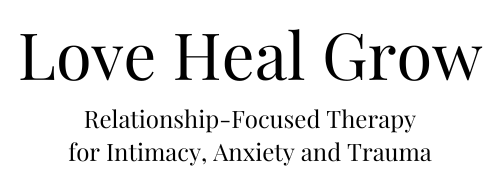
It is always important to remember that our minds and bodies are connected. When we’re feeling anxious, our bodies become tense; when we aren’t feeling physically well, it can have a major impact on our mental health. Today, we’re going to discuss progressive muscle relaxation, or PMR. This is a technique you can use to release the bodily tension caused by stress and anxiety. It is a non-pharmaceutical intervention that anybody can learn how to do. Let’s take a look!
Progressive Muscle Relaxation Explained
Progressive muscle relaxation (PMR) was first developed in the 1920s by American physician Edmund Jacobson. In fact, you may sometimes hear this technique called the Jacobson technique to this day.
PMR works on the principle of contrast between tension and relaxation in your muscles. By deliberately tensing and then relaxing your muscles, you become more aware of bodily sensations and are better able to differentiate between the two states. This heightened awareness can help you recognize and release physical tension and stress in your body.
PMR is often recommended as a complementary technique for managing anxiety, stress, and even insomnia. It can be practiced on your own or with the guidance of an instructor, therapist, or recorded audio. As with any relaxation technique, regular practice can lead to better results over time. If you have specific health concerns or conditions, it’s a good idea to consult a healthcare professional before incorporating any new relaxation techniques into your routine. But PMR is very gentle– the intensity of the tension and relaxation is entirely self-directed, so this technique is physically suitable for the majority of people.
How Can Progressive Muscle Relaxation Help?
There are numerous benefits to PMR. The goal of PMR is to promote relaxation, reduce stress, and alleviate physical tension. It’s often used as a stress management and relaxation technique in various contexts, including therapy, mindfulness practices, and general well-being.
The process of PMR typically involves the following steps:
- Preparation: Find a quiet and comfortable place to sit or lie down. Remove any distractions and make sure you won’t be interrupted.
- Awareness: Close your eyes and take a few deep breaths to center yourself. Pay attention to how your body feels at this moment, noting any areas of tension or discomfort.
- Progressive Tension: Starting with a specific muscle group, tense the muscles deliberately and hold the tension for about 5-10 seconds. Focus on the sensation of tension without straining or causing pain.
- Release: After holding the tension, release it suddenly and completely. Let go of the tension and allow the muscle to relax fully. Pay attention to the contrasting sensations of tension and relaxation.
- Rest: Take a few moments to rest and observe the sensations in the relaxed muscle group. Feel the difference between the tension and relaxation.
- Move on to the Next Muscle Group: Repeat the process for each major muscle group in the body, progressing from the feet up to the head. Commonly targeted muscle groups include the feet, legs, buttocks, abdomen, chest, back, hands, arms, shoulders, neck, and face.
- Completion: Once you’ve gone through all the muscle groups, take some time to simply breathe and enjoy the relaxed state you’ve achieved. Gradually bring your awareness back to the present moment.
The PMR process usually takes about 15-20 minutes to complete fully. You can start with whatever muscle group feels the most comfortable; if you want to start head-first, you can. It is crucial that you remember to breathe deeply during the PMR process– holding your breath will only make your muscles more tense.
What Can Progressive Muscle Relaxation Help With?
PMR primarily helps with anxiety, and clinical studies have shown that it can help with anxiety caused by stressful situations and generalized anxiety. Several studies have shown how helpful PMR can be in numerous situations; one 2019 study showed that PMR reduced symptoms of depression, anxiety, and stress related to unemployment, while another study that same year found that it reduced tension and anxiety related to dental care. A 2020 study that taught PMR techniques COVID-19 patients found that PMR reduced their anxiety and improved their ability to cope in a challenging health situation.
But anxiety isn’t the only thing that PMR can help with. Here are some of the other major benefits of this type of relaxation technique.
- Stress Management: PMR is a valuable tool for managing stress. Even the short-term use of PMR can significantly reduce the levels of the stress hormone cortisol, as well as reduce the self-reported stress levels of participants.
- Improves Sleep: PMR can also help you get better sleep, especially if you have insomnia or other difficulties falling asleep. It has been shown to be helpful for people with extremely low sleep quality, including burn patients and postpartum mothers of premature babies.
- Reduces Neck Pain: If you carry tension in your neck or shoulders, it’s likely that you experience neck pain. Learning how to release this tension through PMR can help reduce the symptoms of chronic neck pain.
- Reduces Low Back Pain: Our lower backs take a lot of physical stress and have a lot of major muscle attachment points. As such, chronic low back pain is another extremely common problem– and mental or emotional stress can make it worse. If you have chronic low back pain, PMR may help relieve it.
- Improved Systolic Blood Pressure: If you have high blood pressure, you may have been told to avoid stress– but that can be extremely challenging. Life can be stressful, and learning relaxation techniques can help lower the impact of emotional stress on your physical health. In a 2019 study, the combination of PMR and music therapy was found to improve systolic blood pressure, and another study found that PMR alone has the ability to significantly improve systolic blood pressure.
- Decreases the Frequency of Migraines: Migraine patients know: Migraines are not “just headaches.” Migraine is a neurological condition that can cause intense pain, visual hallucinations, and other serious neurological concerns. Migraine episodes can be triggered by stress, so relaxation techniques that help you deal with stress can help prevent them. PMR is correlated with a decreased frequency of migraine attacks, possibly by helping balance serotonin levels.
- Reduces TMJ Symptoms: If you have temporomandibular joint disorder linked to stress, PMR may help. The calming effect and release of tension can help you release the tension in your jaw muscles, too.
Ultimately, PMR is a helpful tool for many people experiencing stress and anxiety. And while you can use it by itself, it often works best as one of several tools for reducing stress and anxiety. If stress and anxiety are causing you difficulties in your daily life, consider reaching out to a therapist. At Love Heal Grow, our team of experienced mental health professionals have years of experience helping people just like you understand and reduce their stress and anxiety. Contact us today to start your mental health journey!
























